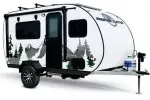All-aluminum RVs
All-aluminum (“no-rot-no-corrosion”) RVs may not be for everyone, they seem to be perfect for small and medium size models, “off-road” campers, toy haulers.
Technological progress as well as present-day requirements for lightweight, durable and easy to maintain RVs led to the development of new technologies taking advantage of already existing and well-proven materials.
Over the years most RV manufacturers successfully replaced (or limited the use of) all forms of wood (plywood, luan, hardwood ….). While in general these traditional construction materials are inexpensive and easy to process, they are very vulnerable to water (moisture, humidity…) and prone to decay. It was then just the matter of time when aluminum, composite materials, fiberglass etc… found their way into RV manufacturing process. These days you will find them in almost all RVs – be it aluminum siding sheets and wheels, fiberglass lamination, caps, covers and even whole molded shells, TPO roof membranes, composite counter-tops etc… .
However some manufacturers went even further developing technologies known as “All-Aluminum” (see --> LivinLite QS Toy Hauler) and “All-Fiberglass” (see --> Fiberglass RVs) where almost all RV components are made exclusively from two mentioned materials. It will be interesting to compare both of them in terms of pros, cons and limitations so when you will start looking for new RV, you will possibly make “more educated” decision.
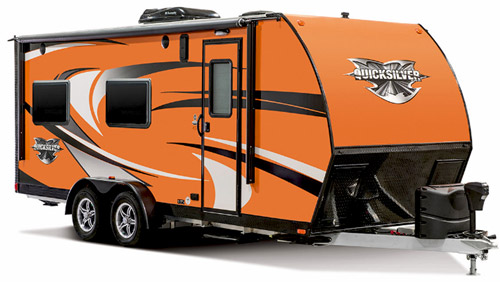
Livin'Lite QuickSilver Toy Haukler - Model 720HJ.
This all-aluminum model has elegance of traditional campers
What makes aluminum so special?
Out of many valuable properties of aluminum, the most beneficial for RV business is its light weight, good mechanical strength and resistance to corrosion. Although the aluminum in contact with air forms a thin layer of oxide, due to its high density (and so impenetrability) it actually acts as the corrosion-protecting coating stopping its progress. It’s also worth to mention that the aluminum is easy to process (drilling, cutting, bending….) and reasonable when it comes to joining (welding, bonding….).
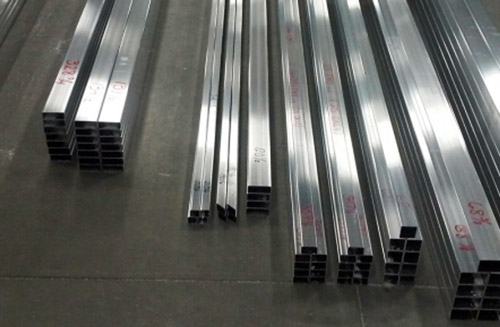
Tubular aluminum profiles (Source: Livin'lite RVs)
Chassis
Typically RVs’ chassis (frames) are made from tubular steel. Although the name “tubular” maybe confusing because in this particular case the tubular components have narrow rectangle profile (instead of circular), the idea is the same. It is a hollow “pipe” taking weight out while leaving strength in. Steel frames are easy to manufacture, strong and inexpensive hence their widespread use in automotive and RV industry. Usually, steel tubes are powder-coated to protect them from corrosion. However the protection (especially when “abused” by water and gravel) will not last forever, so sooner rather than later the corrosion will start its “meal”.
The next crucial RV component (and weak spot) is the floor which is made as a separate item usually from marine-grade plywood. It’s another element vulnerable to weather and prone to rot.
In “All-aluminum” RVs the frame is entirely made from the tubular aluminum profiles. Also, in contrast to steel-frame RVs, now the aluminum floor is an integral part of the frame. Typically the plank floor is fully welded to the frame adding an extra strength to the chassis. For the esthetic reasons the interior part of the floor can be later covered by vinyl (linoleum) or laminated (vacuum-bonded) with fiberglass. But in any case, such chassis is completely “rot-free” and “corrosion free” so the most critical section of the “all-aluminum” RV is really built to last forever!
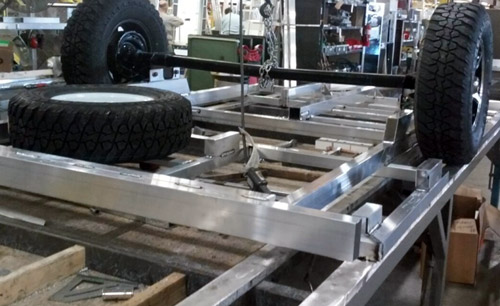
Examples of all-aluminum frame (above) and floor (below)
Source: Livin'Lite RVs
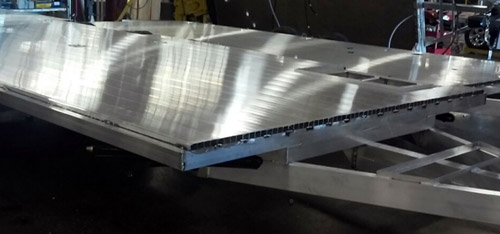
Few facts:
- Aluminum and steel have approximately the same mechanical strength however the steel is about 2.5 times heavier. That is why the aluminum is the preferred choice for any ultra-lite RV.
- Construction-grade steel is definitely less expensive than aluminum. It is also easier to weld (aluminum welding process is a bit more complex).
- Steel has indefinite fatigue life (in other words it can withstand repeated load cycles), while aluminum after long sequence of load cycles can break.
- Steel is highly corrosive, so any exposed element has to be coated to prevent it from rust. Unfortunately no protection (galvanization, powder coating, paint ….) will last forever especially if exposed to moist, water and abrasive environment (for example gravel, debris…).
All in all: Aluminum chassis is more expensive than the steel one but it considerably brings down RV’s weight as well as provides lasting (weather resistant) solution. While it is perfect for small and medium sized RVs, its use is questionable for very large, heavy rigs.
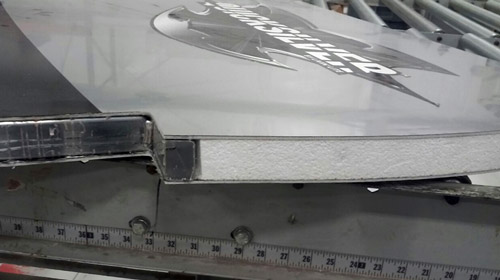
Laminated aluminum wall with block-foam insulation
Source: LivinLite RVs
Shell (walls and roof)
While laminated aluminum, Azdel or luan sheets are often used for siding and roofing, traditional wooden frames and trusses are still dominating the RV industry. In “all-aluminum” RVs these crucial elements are replaced by tubular aluminum profiles. In other words the whole shell including sidewalls, front cap and roof is aluminum-framed and as a result wood (and rot)-free. The typical wall panel is a sandwich of two laminated sheets of metal attached to the tubular frame with space in between filled by thermal insulation (usually block foam in walls and fiberglass on the roof and floor).
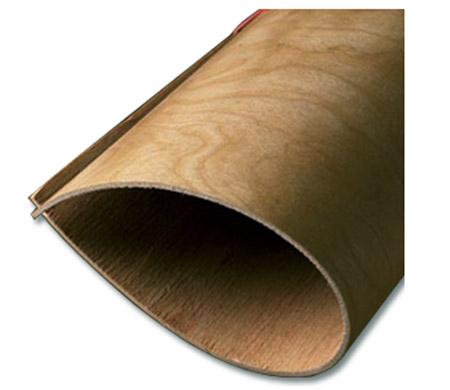
Luan is a plywood made from South-Asian trees (white or red lauan). It is very flexible and lite and that is why it found application in RV industry. Like all plywood components it is however vulnerable to moisture....
Source: www.pioneer-travel.com
Traditionally, the lamination process was performed by spreading a layer of strong adhesive and then applying pressure on both - bonding and substrate surfaces (usually moving the “sandwich” through a roller machine). The major problem with this pinch-roller technology is that the process is not “very uniform”. It may leave “bubbles” in some areas leading to delamination.
So these days many manufacturers use the vacuum-bonding technique when both surfaces (with adhesive in between) are first placed in the “Vacuum Bag” and then the air (and moisture) from between both surfaces is evacuated. This prevents creation of “bubbles” in the next step of the process when for about 30 minutes the chamber with “vacuum bag” (and bonding surfaces) is pressurized to approximately 130 lbs/square inch. The “trick” is that much longer “lamination” time as well as uniformity of the applied pressure leads to superior bonded surfaces.
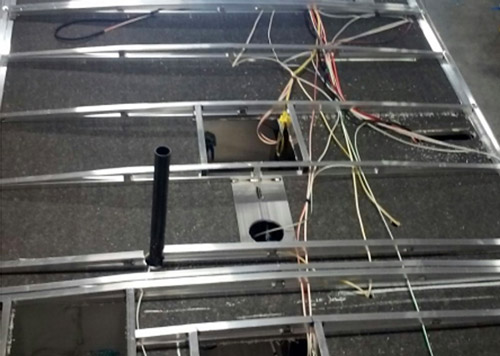
Aluminum roof rafters (above) and fiberglass thermal insulation (below) (source: LivinLite RVs)
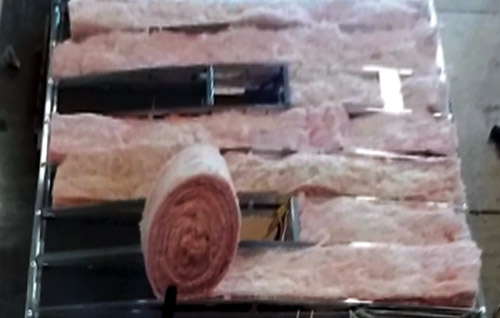
Notes:
- With exception of molded-fiberglass shells (see below), all remaining shells regardless how they are made, at some time will leak (as Murphy concluded: “If something can go wrong, it will”). Temperature gradients (not only between winter and summer, but also between full sun exposure and night) will cause continuous expansion and contraction of construction materials. The effect will be amplified by the impact of the freezing water, shocks and vibrations etc… . As the result, the shell will lose hermeticity (tightness of seals). Frankly, it doesn’t matter how well the RV is manufactured and how thorough is the final inspection. It is just the matter of severity of mentioned “stresses” and time!
- Any type of wood used for RV’s construction (frame studs like popular 2 x “whatever”, roof rafters, plywood, luan etc…) when exposed to humidity and/or moisture will start rotting, developing mildew and eventually will decay. The bottom line is – modern RVs’ shells should be built using either aluminum sheets and/or Azdel (Lightweight Reinforced Thermoplastic is strong, water-resistant composite material with better thermal rating than wood) and/or fiberglass)….
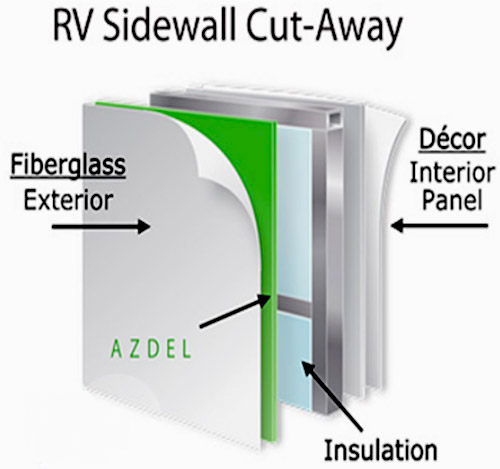
Aluminum-framed Azdel wall
- Exterior/Interior layer added during the lamination process acts as a seal from weather elements, it also serves as the protection (UV, discoloration….) as well as serves aesthetic purposes (graphic design, color….). The best lamination results are achieved in TRUE vacuum-bonded process.
- Block foam insulation is a superior choice for all walls (vertical areas). It’s not only that it does not settle, but also it does not absorb the moisture. The fiberglass insulation can be used in “horizontal” areas (roof, floor) where the risk of displacement is null. It should be noted however, that the traditional “residential” fiberglass insulation has tendency to absorb the moisture!
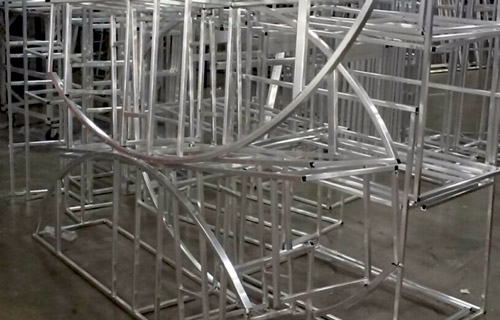
LivinLite cabinetry frames are some of the strongest in the RV industry (source: LivinLite RVs)
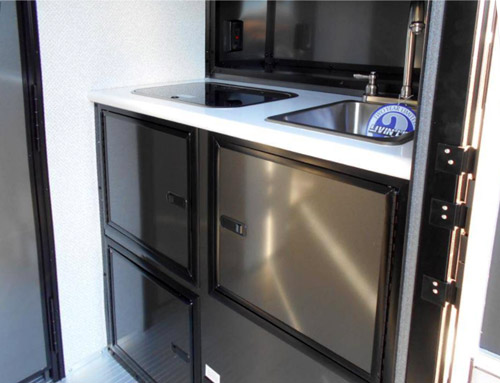
And here the final product: Kitchen cabinets (QS Toy Hauler model 720HJ).
Source: LivinLite RVs
Cabinetry and more…
All-aluminum actually goes farther than just the chassis and the shell. Many RV-ers may feel uncomfortable with aluminum cabinetry but after close look at the benefits there is chance to change the perception. Understandably, for all of us it is unthinkable to accept metal cabinetry at our primary residence. And it is for a reason – we simply cherish wood’s warmness, appearance, elegance, natural colors….. No wonder that at first, all-aluminum cabinetry in our “home-away-from-home” brings so-to-speak “uneasiness”.
Well, let’s start with benefits.
- Aluminum framing makes cabinets much more robust than any wood (actually typically plywood). Keep in mind that all “mobile homes” are subject to shock and vibrations when on the road. It’s definitely not “healthy” for wooden cabinets, especially when they are not made from the hardwood (hardwood doors look nice, but they have nothing to do with the frame).
- All forms of wood products are prone to rot and mold. The process is accelerated not only by water leaks but also by weather conditions (humidity, temperature variations, condensation etc….). Keep in mind that most RVs for the winter are stored outside and their interior’s is not temperature and humidity controlled like our primary residence where we actually live.
- Aluminum is much easier to wash (keep clean) compared to wood.
- And finally let’s make it clear – modern technologies can make aluminum cabinetry looking stylish and elegant.
So what are the “cons”? Well, metal is metal, it is “cold” in touch and for many of us, aluminum cabinetry will bring the picture of “cans”. It’s just a psychological effect, but we cannot ignore it or pretend that it does not exist!
Summarizing: All-aluminum RVs may not be for everyone. They seem to be perfect for small and medium size RVs, for “off-road” campers, for toy haulers. However, most likely all-aluminum construction method will not be a best choice for Residential-like RVs where we look for charm and warmness offered by wood. Of course it does not mean that aluminum cannot be used in construction of big residential-style rigs. But certainly chassis (frames) and cabinetry will keep traditional materials (steel and wood).
Check details of an "All-Aluminum" toy hauler by Livin'Lite:
Note: Check with the manufacturer and / or authorized RV Dealer for the up-to-date list of features, options as well as latest specifications. These written above may not be accurate and certainly are subject to change by the factory. We are not responsible for any inaccuracy, the above text is provided only for the general information.
This review was written based on publicly available information for the benefits of the community of RV-ers. We do not receive any gratification or financial benefits from RV manufacturers, dealers, and any other promoters of RVs.
We are NOT involved in sale and/or retail of RVs!
.


